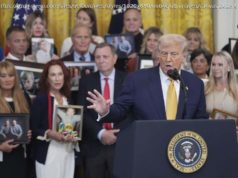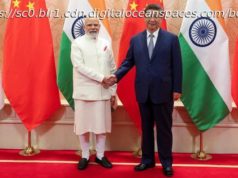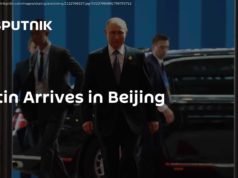As the economy confronts greater pressures and risks, Beijing tightens its grip.
As 2017 wraps up and 2018 beckons, it’s worth reviewing what we forecast for China in the year now ending, and to cast ahead for what themes might play out over the next 12 months. After this week’s meeting of Communist Party leaders at the Central Economic Work Conference, we can expect their targets and objectives for 2018. And these meetings have great import: It was the 2015 meeting that started the ongoing “supply-side reform” campaign.
Last year we focused on a couple of points. First, watch the data, not the New Year’s resolutions. While China touts deleveraging efforts, the data is mixed. The debt-to-GDP ratio in China is only up slightly from 2016 to 260 percent, though it is expected to top out at 327 percent in 2022. The moderation was due not to slowing debt growth, but a jump in commodity prices that pushed up nominal gross domestic product. Watch debt growth in 2018: Prices are expected to fall again, raising debt-to-GDP. China still has not given up its debt habit.
Second, the Federal Reserve rate hikes last year were likely to play a big role in Chinese policy. In retrospect, they did and did not. Interest rates in China are up sharply, with even interbank rates over one month up 1.5 percent since January 2017. Money market rates are up to 6.39 percent for 14-day repurchases. Rate increases are putting pressure on Chinese corporate bonds given the overwhelmingly short-term nature of borrowing, which constantly resets rates. Oddly, even as U. S. interest rates increased, the dollar fell, with indexes down 9 percent. Though it is unclear why the dollar fell, if the Fed hikes four times as predicted by Goldman Sachs, this could cause the currency to reverse course. A strong dollar and rising U. S. rates will pressure China.
Third, heading into the National Congress, I said watch out for Chinese politics. Though Premier Li Keqiang remains in office, Beijing clearly swept away any vestiges of market adherence. The installation of Party committees over the board of directors in foreign firms and major state-owned enterprises laid bare Beijing’s ambition. Communist Party strength would take priority over everything.
As we look into 2018, some of these themes carry forward, but with a twist. Beijing is solidifying its control over all aspects of the economy. The Party released new rules on overseas investments by firms and has enforced rules mandating that banks balance their foreign exchange transactions. After the Fed recently raised rates by 0.25 percent, the People’s Bank of China followed with a hike of only 0.05 percent, confident it can tame any potential outflows. If the Fed hikes another three times and the dollar does not drop another 10 percent, this would push interest rates in China for debt over six months close to an intolerable 8 percent and reduce foreign exchange reserves beneath the $3 trillion level.
Politics matter for the Chinese economy this year, but more in international terms. The closed Chinese market, which for instance refused to allow foreign self-driving cars on grounds of national security, has come under harsh criticism. The European Union and the United States are teaming up against China at the World Trade Organization, attacking its closed market and state subsidies. President Donald Trump has labeled China a strategic competitor, with fundamental national security implications, after repeated attempts to improve market access. With domestic politics resolved, the biggest potential source of financial or economic risk to China will be external.
Finally, we need to watch the dual deleveraging and supply-side reform campaigns. Corporate debt has moderated, but household and other forms of debt have picked up. Unless China curbs these other categories, it will soon find every sector of the economy is excessively indebted. While Beijing has indicated it wants to slow total debt growth, its ability to maintain growth while restraining debt has not been tested in more than a decade.
Even the supply-side reform campaign has had mixed results. Although some capacity has been removed from steel, coal and other heavy industry, fixed asset investment levels remain relatively high, thereby adding new capacity. Though prices for raw input commodity prices jumped, debt-to-equity ratios only slightly improved and profit margins remain tiny. Any drop or even flattening of these commodity prices will have a big impact on Beijing’s plans to transform the economy. With robots flooding into light manufacturing, Beijing will have to find jobs for displaced workers, and heavy industry seems to be the new unemployment government program.
The pressures facing Beijing in 2018 carry some similarities from previous year — except nothing has fundamentally improved. Debt growth has moderated but is expected to worsen with foreign exchange and political concerns on the horizon. That will make for a challenging year ahead.
To contact the author of this story: Christopher Balding at cbalding@phbs.pku.edu.cn
To contact the editor responsible for this story: James Gibney at jgibney5@bloomberg.net






